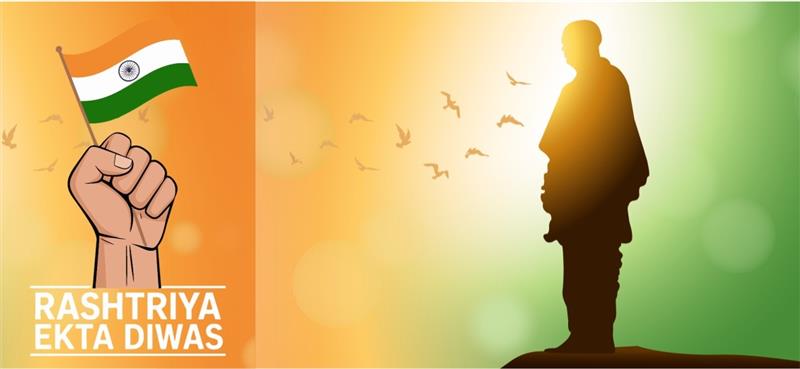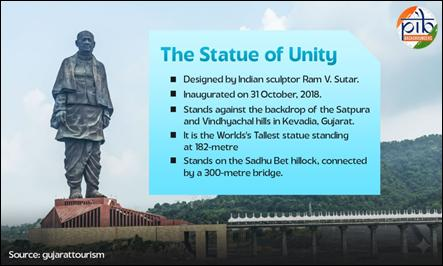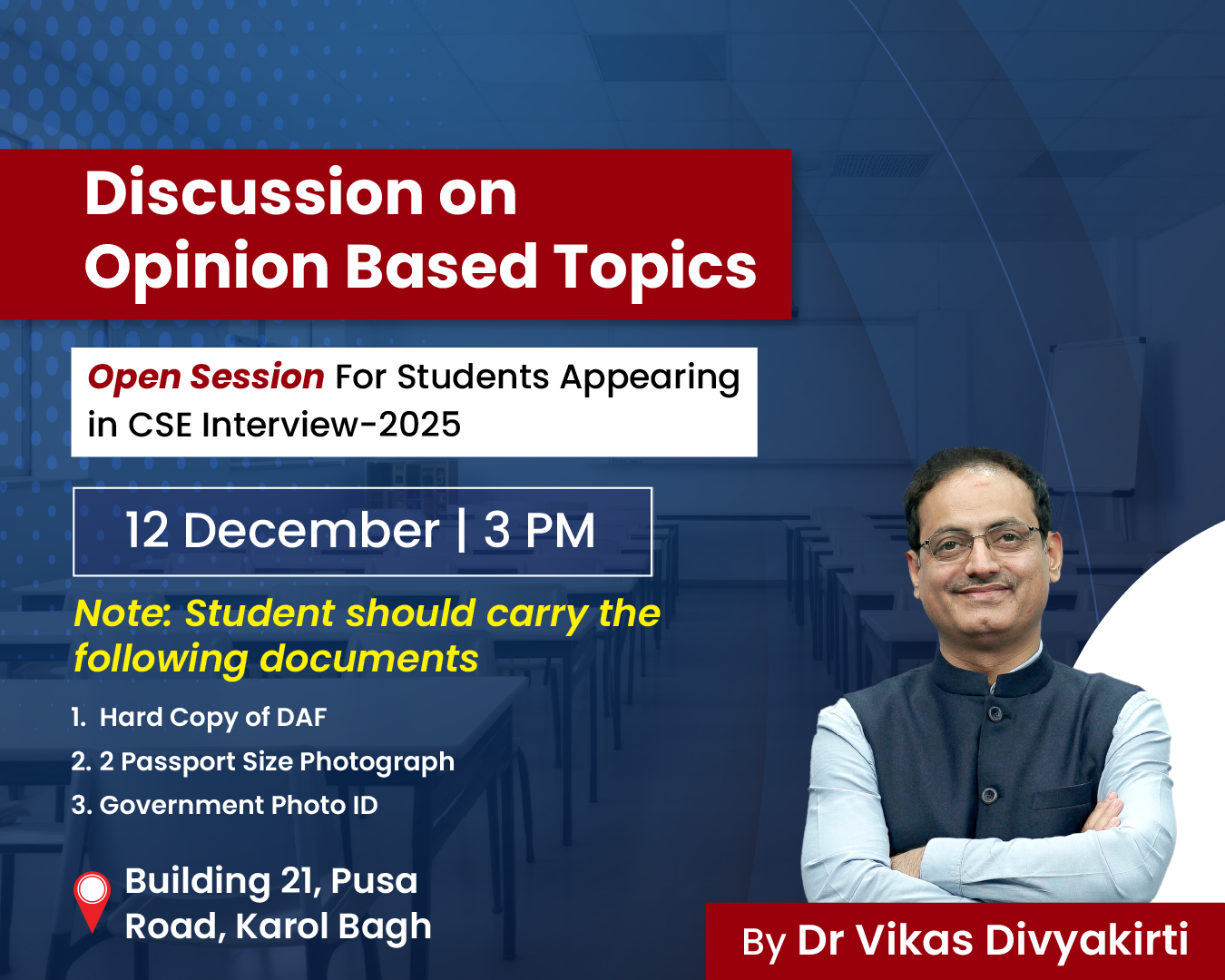Ekta Diwas 2025: The Iron Man and the Idea of an Indivisible India
Blogs Home
- 31 Oct 2025

Table of Content
- Institutionalising the Spirit: National Unity Day and Sardar@150
- Forging a Nation: Patel’s Vision of Unity
- Culture as Cohesion: From Heritage to Harmony
- Tourism and Togetherness: Discovering India, Strengthening Bonds
- Renewing the Pledge: Panch Pran and Amrit Kaal
- Carrying Forward the Promise of Ek Bharat Shreshtha Bharat
Every year, on 31st October, India celebrates Rashtriya Ekta Diwas (National Unity Day) to honour the birth anniversary of Sardar Vallabhbhai Patel, one of the principal architects of independent India. As the country’s first Deputy Prime Minister and Home Minister, Patel played a decisive role in integrating more than 560 princely states into the Indian Union, laying the foundations of a united and sovereign nation. This year’s celebration of the Rashtriya Ekta Diwas is particularly special as it marks the 150th birth anniversary of Sardar Patel.
Institutionalising the Spirit: National Unity Day and Sardar@150
In 2014, the Government of India declared Patel’s birthday as National Unity Day, recognising that unity is not a static fact but a continuous national commitment.
During the 2015 observance, Prime Minister Narendra Modi launched the ‘Ek Bharat Shreshtha Bharat’ initiative to strengthen connections and cultural exchange among people of different regions.
This year, Ekta Nagar — home to the 182-metre-tall Statue of Unity — will host the main ceremonies: a Unity Parade featuring CAPF, NCC and police contingents, performances by over 900 artists, and a massive ‘Run for Unity’ across states. Cultural tableaux, folk performances and youth rallies will underscore that unity is best expressed through participation.
Adding to the nationwide fervour, the Sardar@150 Unity March (Yatra) — organised by the Ministry of Youth Affairs and Sports through the My Bharat platform — seeks to inspire the spirit of unity, patriotism, and civic responsibility among the youth, reflecting the vision of “Ek Bharat, Aatmanirbhar Bharat.”
Simultaneously, the iconic “Run for Unity”, a nationwide marathon symbolising national cohesion, was held on 31st October 2025 across major cities, with the flag-off event in New Delhi. Together, these events — from marches to performances and rallies underscore that unity in India is best expressed through participation, where citizens embody the ideals of solidarity envisioned by Sardar Vallabhbhai Patel.

Forging a Nation: Patel’s Vision of Unity
Few figures shaped the Republic’s foundations as decisively as Patel, who welded together over 560 princely states to create a single Union in the wake of Partition. His persuasion and resolve ensured that regions like Junagarh, Hyderabad and Jammu & Kashmir did not slip into fragmentation.
Patel believed that unity was never uniformity; that India’s strength lay in its federal diversity, its “federation of minds and hearts.”
His legacy continues to anchor the nation in an age of multiple identities and aspirations. He was instrumental in establishing the All India Services, envisioning a “steel frame” of administration to uphold unity and efficiency across a vast, diverse country.
Patel also emphasized agricultural reform, local governance, and national security, laying the institutional groundwork for a stable and cohesive Republic.
His pragmatic leadership and unwavering commitment to national interest transformed India’s freedom into a functioning, united democracy.
“My only desire is that India should be a strong and united nation, a nation that no power can dislodge.”
— Sardar Vallabhbhai Patel
Culture as Cohesion: From Heritage to Harmony
In a civilisation where languages, faiths and folk traditions coexist, culture is the most durable bond of unity.
Institutions under the Ministry of Culture — from zonal centres to national museums — work to democratise heritage so that no region feels excluded from the national narrative.
The flagship initiative “Ek Bharat Shreshtha Bharat” pairs states and UTs for cultural exchanges in language, food and art.
When students in Maharashtra learn Bihu, or performers from Assam present Lavani in Pune, they realise Patel’s ideal that “knowing one another is the first step to standing together.”
Tourism and Togetherness: Discovering India, Strengthening Bonds
Tourism has become a modern instrument of national cohesion.
The campaigns ‘Dekho Apna Desh’ and ‘Incredible India 2.0’ encourage citizens to explore their own land — from Punjab’s Golden Temple to Kerala’s backwaters.
In 2024, domestic tourism crossed 294 crore visits, a sign of growing curiosity and pride among Indians about India.
Schemes such as Swadesh Darshan and PRASHAD link infrastructure with local livelihoods.
When a woman in Nagaland hosts travellers from Gujarat, or an artisan in Jodhpur sells crafts to visitors from Tamil Nadu, they exchange more than goods — they share stories that knit the Republic closer.
Renewing the Pledge: Panch Pran and Amrit Kaal
Patel’s message was clear — unity is a task for every generation.
The five resolves (Panch Pran) of the Azadi ka Amrit Mahotsav place national solidarity at the heart of India’s journey to 2047.
As the Prime Minister reiterates, “Ek Bharat, Shreshtha Bharat” is not a slogan but a way of life — a pledge to see our diversity as strength and our citizens as one family (Vasudhaiva Kutumbakam).
Carrying Forward the Promise of Ek Bharat Shreshtha Bharat
As India celebrates Sardar@150, the true tribute to the Iron Man lies not in marble or memory, but in ensuring that every citizen feels part of the same national story.
Each school pledge, each cultural exchange, each journey across states adds a thread to the tapestry of unity he forged.
In spirit and in action, Rashtriya Ekta Diwas reaffirms that India’s destiny is collective, a nation where the strength of many voices creates one harmonious song.
FAQs
1. What is Rashtriya Ekta Diwas?
It is observed on 31st October each year to honour Sardar Vallabhbhai Patel’s birth anniversary and reaffirm India’s unity and integrity. It was instituted in 2014.
2. Why is 2025 significant?
2025 marks Sardar Patel’s 150th birth anniversary (Sardar@150) with a two-year programme of national events at Ekta Nagar and across India.
3. What major programmes are organised on this day?
The ‘Run for Unity’, Unity Parade at Statue of Unity, and state-level cultural events under the Ministry of Culture.
4. What is the spirit of ‘Ek Bharat Shreshtha Bharat’?
It institutionalises Patel’s vision by pairing states and UTs for cultural and linguistic exchange to foster mutual understanding and unity.
5. How does Ekta Diwas relate to Amrit Kaal 2047?
Both emphasise national solidarity and inclusive growth, seeing unity as the foundation for India’s centenary of Independence.





